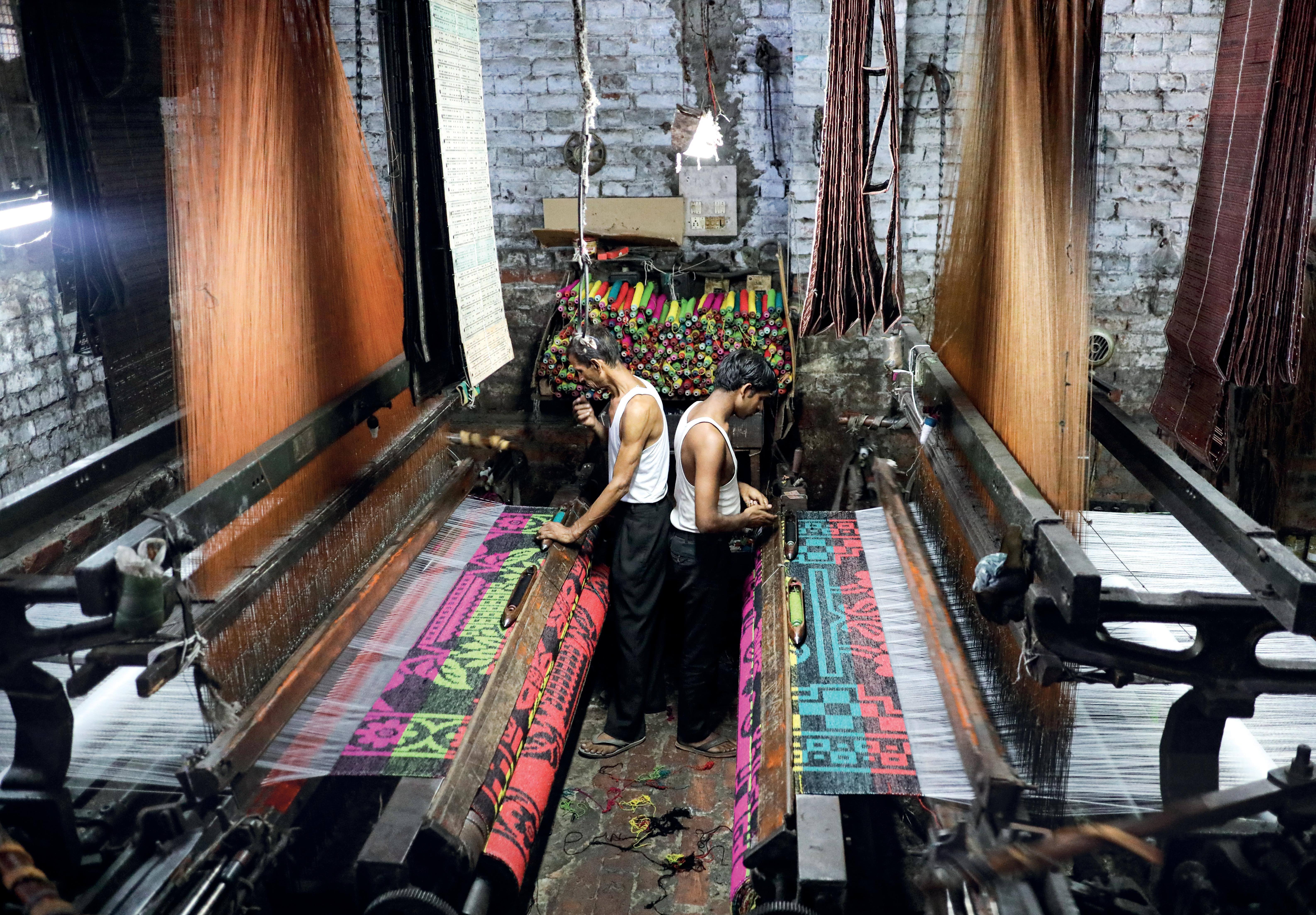
BELIEVE IT or not, most of our clothes today have plastic in them. From the warm, shiny fleece jackets we wear to brave the winter chill to body-hugging workout clothing to stretchy and comfortable lowers, all the apparel is either completely made out of plastic fibres such as polyester, nylon and acrylic, or from the blending of natural fibres such as cotton and wool with the synthetic material.
About 60 per cent of material made into clothing is plastic, which includes polyester, acrylic and nylon textiles, says the UN Environment Programme (UNEP). The global production of polyester, the most commonly used plastic fibre, has increased by nearly 900 per cent between 1980 and 2014, as per November 2022 report released by US-based non-profit Fibershed. There is a reason the textile industry is so fond of polyester. Despite being tough and durable, it creates new possibilities of fashion. Clothes made out of polyester hold their shape well, are lighter, wrinkle-free and resistant to shrinking and colour fading. But perhaps the most important reason for its popularity is that garments made from synthetic fibres are substantially cheaper than natural fabrics. In April 2019, the cost of polyester yarn in India was ₹105 a kg, while cotton yarn was more than double at ₹213, as per the latest data released by the Union Ministry of Textiles. While on the face of it, clothes made of plastics appear harmless, their infiltration into the textile industry is a cause for concern. These synthetic fabrics have significant environmental impact during production, use and disposal.
هذه القصة مأخوذة من طبعة January 01, 2023 من Down To Earth.
ابدأ النسخة التجريبية المجانية من Magzter GOLD لمدة 7 أيام للوصول إلى آلاف القصص المتميزة المنسقة وأكثر من 9,000 مجلة وصحيفة.
بالفعل مشترك ? تسجيل الدخول
هذه القصة مأخوذة من طبعة January 01, 2023 من Down To Earth.
ابدأ النسخة التجريبية المجانية من Magzter GOLD لمدة 7 أيام للوصول إلى آلاف القصص المتميزة المنسقة وأكثر من 9,000 مجلة وصحيفة.
بالفعل مشترك? تسجيل الدخول

In leading role again
MOVIES AND WEB SERIES ARE ONCE AGAIN BEING SET IN RUSTIC BACKGROUNDS, INDICATING A RECONNECT BETWEEN CINEMA AND THE COUNTRYSIDE

One Nation One Subscription comes at a huge cost
As top US universities scrap big deals with top scientific publishers, India’s ONOS scheme seems flawed and outdated

Return of Rambhog
Bid to revive and sell the aromatic indigenous paddy variety has led to substantial profits for farmers in Uttar Pradesh's Terai region

Scarred by mining
Natural springs of Kashmir drying up due to illegal riverbed mining

Human-to-human spread a mutation away
CANADA IN mid-November confirmed its first human case of avian influenza, with a teenager in the British Columbia being hospitalised after contracting the H5N1 virus that causes the disease. The patient developed a severe form of the disease, also called bird flu, and had respiratory issues. There was no known cause of transmission.

True rehabilitation
Residents of Madhya Pradesh's Kakdi village take relocation as an opportunity to undertake afforestation, develop sustainable practices

INESCAPABLE THREAT
Chemical pollution is the most underrated and underreported risk of the 21st century that threatens all species and regions

THAT NIGHT, 40 YEARS AGO
Bhopal gas disaster is a tragedy that people continue to face

A JOKE, INDEED
A CONFERENCE OF IRRESPONSIBLE PARTIES THAT CREATED AN OPTICAL ILLUSION TO THE REALITY OF A NEW CLIMATE

THINGS FALL APART
THE WORLD HAS MADE PROGRESS IN MITIGATING EMISSIONS AND ADAPTING TO CLIMATE IMPACTS. BUT THE PROGRESS REMAINS GROSSLY INADEQUATE